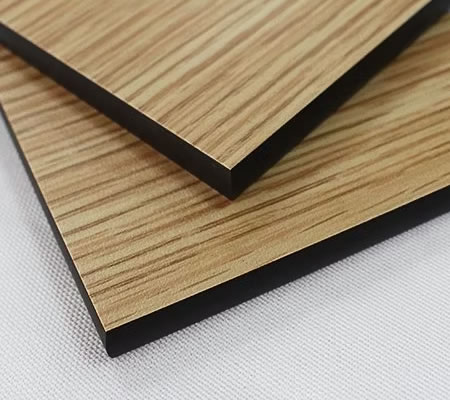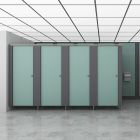What materials are Toilet Cubicles made from?

Modern toilet Cubicles are functional and easy to maintain; however, there are choices to be made regarding the material used in manufacturing. This is often dependent on budget and the washroom environment. In this blog, we discuss your options:
Melamine Faced Chipboard cubicles (MFC)
Should you choose MFC for your toilet cubicles?
+ Most budget-friendly option
- Not recommended for high-traffic areas
- Only suitable for dry areas
Melamine-faced chipboard toilet cubicles, such as our Executive Toilet Cubicles range, are popular due to their low cost. However, they are only suitable for dry environments; if there is likely to be prolonged exposure to moisture, other materials will prove more durable.
MFC is a chipboard core coated with decorative papers and impregnated with thermosetting resins on both sides of the board. It is recommended for low to moderate-use Office Washrooms such as small offices.


Our MFC cubicles are provided with matching PVC edging, which ensures the chipboard core is sealed and not visible. MFC typically has a smaller choice of colours compared with either High-Pressure Laminate or Solid-Grade Laminate. Our MFC Executive range of cubicles is available in a square-edged finish.




High-Pressure Laminate cubicles (HPL)
Should you choose HPL for your toilet cubicles?
+ Highly durable
+ Moisture resistant
+ Suitable for high-traffic areas
- Not suitable for high moisture areas
HPL is a chipboard core coated with decorative high-pressure laminate on both sides. This is bonded onto a VR313 moisture-resistant chipboard. Toilet cubicles manufactured using HPL are usually priced at the top end of the market due to the material's labour-intensity costs. However, you get excellent durability in return.
HPL is the only material with which you can achieve the rounded edges you see on ranges such as our Colossal Toilet Cubicles. Because of this, it achieves a much more up-market and uniform appearance, which looks particularly impactful in office suites and executive spaces.
Our Future Range of toilet cubicles is also manufactured from High-Pressure Laminate (HPL) and is made at a standard height of 2.0m. Their durability suits them for high-traffic dry locations like schools and shopping centres.


Solid Grade Laminate cubicles (SGL)
Should you choose SGL for your toilet cubicles?
+ The best choice for wet areas
+ Excellent durability
+ Decorative on both sides
+ Antibacterial properties
Solid-grade laminate is the only choice for toilet cubicles in wet environments, such as changing rooms that contain showers. SGL toilet cubicles are completely resistant to water, making this material the only viable option for Commercial Shower Cubicles.
SGL comprises several compounded Kraft paper layers and has two decorative sides impregnated with thermosetting.


Our Ultra Toilet Cubicles High Abuse Cubicle Range is manufactured from Solid-Grade Laminate (SGL). Its excellent impact resistance makes it ideal for heavy-duty applications.
SGL also has antibacterial qualities, which makes it ideal for use in Hospital and Healthcare IPS Systems and Commercial Vanity Units.


As always, our team is at the end of the phone for all your queries and questions. Our Washroom Design Service Team has a wealth of knowledge that we’re happy to share with you! If you require guidance or would like to discuss your toilet cubicle options, give us a call at 01202 650900.
MORE TO EXPLORE IN Related Posts

Ultra Plus SGL Toilet Cubicles With Stainless Steel Hardware (High Abuse Range)

Executive MFC Toilet Cubicle Range

Future HPL Toilet Cubicle Range

Ultra Fast Delivery SGL Cubicle Packs






